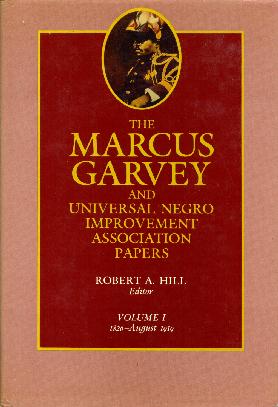
Article in the Blackman
[Kingston, November 8, 1930]
THE CORONATION OF EMPEROR RAS TAFARI1
Last Sunday, a great
ceremony took place at Addis Abbaba [Ababa], the capital of Abyssinia. It was the
coronation of the new Emperor of Ethiopia - Ras Tafari. From reports and
expectations, the scene was one of great splendour, and will long be remembered by those
who were present.
Several of the leading nations of Europe sent
representatives to the coronation, thereby paying their respects to a rising Negro nation
that is destined to play a great part in the fiiture history of the world.
Abyssinia is the land of the blacks and we are
glad to learn that even though Europeans have been trying to impress the Abyssinians that
they are not belonging to the Negro Race, they have returned the retort that they are, and
that they are proud to be so.
Ras Tafari has travelled to Europe and America
and is therefore no stranger to European hypocrisy and methods; he, therefore, must be
regarded as a kind of a modern Emperor, and from what we understand and know of him, he
intends to introduce modern methods and systems into his country.2
Already he has started to recruit from different sections of the world competent men in
dIfferent branches of science to help to develop his country to the position that she
should occupy among the other nations of the world.
We do hope that Ras Tafari will live long to
carry out his wonderful intentions. From what we have heard and what we do know, he
is ready and willing to extend the hand of invitation to any Negro who desires to settle
in his kingdom. We know of many who are gone to Abyssinia and who have given good
report of the great possibilities there, which they are striving to take advantage of.
The Psalmist prophesied that Princes would come
out of Egypt and Ethiopia would stretch forth her hands unto God. We have no doubt
that the time is now come. Ethiopia is now really stretching forth her hands.
This great kingdom of the East has been hidden for many centuries, but gradually she is
rising to take a leading place in the world and it is for us of the Negro race to assist
in every way to hold up the hand of Emperor Ras Tafari.
Printed in Bm, 8 November 1930.
1. Ras Tafari (1891-1975) became king of Ethiopia in 1928. He was crowned emperor of Ethiopia and took the throne name of Haile Selassie I on 2 November 1930. The coronation was an elaborate ceremony attended by the leading rases of Ethiopia as well as representatives of foreign heads of state, including the Duke of Gloucester, representing the King of England, and the Prince of Savoy, representing the King of Italy. The Cathedral of St. George was remodeled and areas of the capital city of Addis Ababa were refurbished for the event. Streets were paved and telephone and electricity lines installed. Horses were purchased from Austria to pull a ceremonial coach previously owned by the ex-emperor of Germany, while the city police were outfitted in khaki uniforms from Belgium; music was provided by a British naval band. The ceremony was carefully planned as "unabashedly modern, although Ethiopian in execution, symbolizing the amalgam that the emperor sought to refine through his administration" (Harold Marcus, Haile Sellassie I: The Formative Years, 1892-1936 [Berkeley, Los Angeles, London: University of California Press, 1987], p. 114, see also pp. 109-113; see also Christine Sandford, The Lion of Judah Hath Prevailed [London: J. M. Dent & Sons, 1955], pp. 56-57).
2. Ras Tafari had advocated a policy of modernization for many years before becoming emperor and had traveled to Europe to carry on diplomacy with foreign powers in his capacity as regent in the mid-1920s. As a child and member of the Amharic elite, he received a mixture of Western, Christian, and traditional education and became an avid reader of European literature. As regent he constructed a home in modern style and furnished it with European furniture and art work. As one biographer has pointed out,
As one entered or left the regent's residence, one could not help noticing that the guard saluted smartly in European style, wore a Khaki uniform, and was armed with modern weapons. Obviously, Tafari had pretensions, mostly European-inspired. It was now time [1924] for him to visit the Continent, to stir people there to assist him in modernizing Ethiopia. Westerners steeped in contemporary racial stereotypes had always found Tafari's features, manners, wit, and intelligence gratifyingly non-African. The ras thus comprised the ingredients for a public relation success in Europe. (Marcus, Haile Sellassie I, p. 58)
As emperor, Haile Selassie's modernization policies included creation of a centralized govemment and civil service, the issuance of a constitution, educational reform, and public works projects.
The Marcus Garvey and Universal Negro Improvement Association Papers, edited by Robert A. Hill (University of California Press 1983), vol. 7, pp. 440-441.
